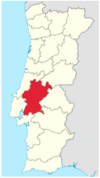Tick-Borne Pathogens in Companion Animals and Zoonotic Risk in Portugal: A One Health Surveillance Approach
- PMID: 40871278
- PMCID: PMC12388388
- DOI: 10.3390/microorganisms13081774
Tick-Borne Pathogens in Companion Animals and Zoonotic Risk in Portugal: A One Health Surveillance Approach
Abstract
This study aimed to assess the emergence and/or re-emergence of Tick-borne Diseases (TBD) in Portugal by linking the hemoparasite burden in companion animals to vector-borne disease dynamics through a One Health approach. Between 2015 and 2024, 1169 clinically suspected animals with hemoparasite infections, treated at the Hospital Veterinário de Santarém (HVS), underwent serological confirmation for Rickettsia conorii, Babesia canis, Ehrlichia spp., and Haemobartonella spp. A total of 3791 serological tests (3.2 tests per animal) were performed and 437 animals tested positive for at least one of the four hemoparasites under investigation. From 2020 to 2024, tests nearly tripled from 894 to 2883, raising positive cases and prevalence from 29.5% to 39.9%, especially for rickettsiosis and hemobartonellosis, indicating an increased circulation of their vectors. A national vector surveillance initiative identified Hyalomma spp., Rhipicephalus sanguineus, Ixodes ricinus, and Dermacentor sp. as primary tick vectors in Portugal for the hemoparasites mentioned above and for other agents like arbovirus, such as Crimean-Congo Hemorrhagic Fever Virus (CCHFV) and tick-borne encephalitis virus (TBEV). This study found that the vectors responsible for transmitting hemoparasitosis, given the high number of serologically positive cases detected in the HVS, represent an increasing risk for TBD. These findings highlight the relevance of companion animal monitoring as an early-warning component within a One Health surveillance approach.
Keywords: Ixodidae; arbovirus; emergence; hemoparasite; public health; vector.
Conflict of interest statement
The authors declare that they have no conflicts of interest.
Figures
Similar articles
-
Insights into the virome of Hyalomma marginatum in the Danube Delta: a major vector of Crimean-Congo hemorrhagic fever virus in Eastern Europe.Parasit Vectors. 2024 Nov 22;17(1):482. doi: 10.1186/s13071-024-06557-2. Parasit Vectors. 2024. PMID: 39578881 Free PMC article.
-
Diversity of ticks and tick-borne pathogens in ticks removed from dogs and cats: a focus on Poland, Czech Republic, Slovakia, Hungary, and Romania.Parasit Vectors. 2025 Jul 21;18(1):290. doi: 10.1186/s13071-025-06852-6. Parasit Vectors. 2025. PMID: 40691614 Free PMC article.
-
Ticks and tick-borne pathogens in selected abattoirs and a slaughter slab in Kumasi, Ghana.Vet Med Sci. 2024 Sep;10(5):e70030. doi: 10.1002/vms3.70030. Vet Med Sci. 2024. PMID: 39285746 Free PMC article.
-
Distribution of Rhipicephalus sanguineus and Heamaphysalis elliptica dog ticks and pathogens they are carrying: A systematic review.Vet Parasitol Reg Stud Reports. 2024 Jan;47:100969. doi: 10.1016/j.vprsr.2023.100969. Epub 2023 Dec 12. Vet Parasitol Reg Stud Reports. 2024. PMID: 38199685
-
Prevalence of tick-borne pathogens in Rhipicephalus species infesting domestic animals in Africa: A systematic review and meta-analysis.Acta Trop. 2023 Oct;246:106994. doi: 10.1016/j.actatropica.2023.106994. Epub 2023 Jul 27. Acta Trop. 2023. PMID: 37516420
References
-
- Beall M.J., Alleman A.R., Breitschwerdt E.B., Cohn L.A., Couto C.G., Dryden M.W., Guptill L.C., Iazbik C., Kania S.A., Lathan P., et al. Seroprevalence of Ehrlichia canis, Ehrlichia chaffeensis and Ehrlichia ewingii in Dogs in North America. Parasit. Vectors. 2012;5:29. doi: 10.1186/1756-3305-5-29. - DOI - PMC - PubMed
Grants and funding
LinkOut - more resources
Full Text Sources
Miscellaneous



